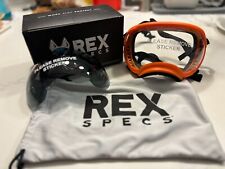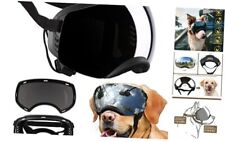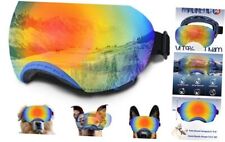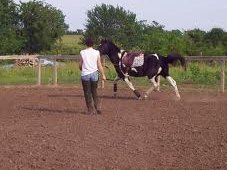Stopping a Runaway Horse
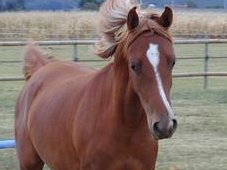
If a horse starts to run away, the first thing the rider should think about is riding the horse, not stopping the horse. Most of the methods proposed for stopping a runaway horse put you in more danger than you will be in if you just ride the horse until he tires or figures he’s far enough away from whatever frightened him in the first place to think about stopping on his own.
If you try to stop a runaway horse by pulling hard on one rein to "double back" in a tight circle, you handicap a frightened horse two ways. First, you take away his ability to see where he is going. He is likely to tip into a ditch, slam into a fence, or run into a tree long before he stops. Second, pulling his head around to one side and locking it there creates real balance problems for the horse. The horse may stop but only because he has gone to his knees or has fallen sideways. The first thing you should do when a horse runs away is to allow the horse to see where he is going and keep his feet underneath him so he has the ability to carry you safely.
Trying to stop the horse with both reins does not work very well, either. A "cavalry stop" involves bracing the reins against the horse’s neck with one hand to get some leverage while pulling both reins through the braced hand and up. Or some people bridge the reins with both hands about halfway up on the horse’s neck then slide the bridge down toward the withers to crank the horse’s jaw in. The problem here is that pressure by itself has no real meaning until you and the horse have agreed to its meaning. With a leverage bit plus all this bracing you might be able to exert several hundred pounds of pressure against the horse’s jaw. But to a horse, that specific pressure has no specific association with stopping. To a frightened horse, the extreme pressure simply becomes something else to escape.
To make things worse, if you hang on the reins or tighten your arms or lock your back or clamp your legs, any move the horse makes uses your own braced muscles to bounce you loose. The horse can also pull you forward over his head easily.
So the first thing to think about when a horse runs away "always" is riding him, not stopping him. You need to have a mental picture of riding, of moving, with the horse. You need to control your mind and focus on problem-solving thoughts rather than allowing panic-driven thoughts to run away with your mind.
The first thing you want to focus on is maintaining your balance. If the saddle has a horn or grab strap, it is OK to take a hold of it to help with balance but be sure to do it with a loose arm. Tight muscles will magnify the horse’s bounce and put you out of the saddle. When the horse first accelerates, you may need to lean forward a bit to stay in balance. But you should recenter yourself as soon as possible. If you keep your upper body upright, you will not go off over the horse’s shoulder if he makes a sharp turn or over his neck if he drops his head.
Rhythm is the basic skill on both the riding tree and the training tree. And rhythm creates relaxation. So after balance you should focus on rhythm so that you can relax and get back in time with the horse. You can start by focusing on the rhythm of your breathing, then on the rhythm of the horse’s surges.
When you are in rhythm with the horse, you can begin squeezing a little each time the horse surges then relaxing to allow the stride. This squeeze and release puts you in time with the horse and begins to put the horse’s attention back on you. If the horse has not already stopped of his own accord, you are now in a position to begin using the rhythmic motion of your aids to help the horse relax. Gradually you can take back control and begin shaping the horse’s strides instead of just riding them. And now you can safely stop the horse with the full corridor of aids he understands as "stop."
If someone is swatting a bee around their head with one hand and someone accidentally crushes their other hand in a car door, that person is going to forget about the bee. The pain in their fingers will quickly override any anxiety they had about a bee sting.
When a horse panics about some real or imagined threat and starts running away from it, a rider that panics and clamps and puts hundreds of pounds of pressure on his jaw quickly becomes the car door instead of the bee. You become a bigger problem than the one the horse was worrying about in the first place.
Heeding is about learning how to become the safest, most comfortable place to be in the horse’s mind, the place he can always trust to be the same the same the same. So when things fall apart, your goal is to get back to being the safest place to be for the horse so he can forget about whatever panicked him in the first place. You do that by controlling your mind. It is not up to the horse to take care of you, it is up to you to take care of the horse.
Lack of confidence contributes to panic thoughts so if you are not confident around your horse, you need to work on that. Heeding groundwork helps riders learn how to use rhythm to relax their horse, to show the horse that this relaxed state is a place that is really nice to be, and then keeps that feeling going between them as they progress up the training and riding trees.
If you do not feel confident that you can ride a runaway horse, you should back up on the riding tree to the place where your own rhythm or relaxation or balance or whatever starts to fall apart. As you master each of the riding tree skills in order, you will gain the confidence to stay in control of your mind whenever the horse goes out of his.



